ALSO BY GREG GRANDIN
Empires Workshop:
Latin America, the United States,
and the Rise of the New Imperialism
The Last Colonial Massacre:
Latin America in the Cold War
The Blood of Guatemala:
A History of Race and Nation
FORDLANDIA
FORDLANDIA
The Rise and fall of Henry Ford's Forgotten Jungle City
Greg Grandin


Metropolitan Books
Henry Holt and Company, LLC
Publishers since 1866
175 Fifth Avenue
New York, New York 10010
www.henryholt.com
Metropolitan Books and  are registered trademarks of
are registered trademarks of
Henry Holt and Company, LLC.
Copyright 2009 Greg Grandin
All rights reserved.
Distributed in Canada by H. B. Fenn and Company Ltd.
DEEP NIGHT
RUDY VALLEE, CHARLIE HENDERSON
1929 WARNER BROS. INC. (Renewed)
Rights for the Extended Renewal Term in the United States controlled by WB MUSIC CORP. and WARNER BROS. INC.
This arrangement WB MUSIC CORP. and WARNER BROS. INC.
All Rights Reserved
Used by permission from ALFRED PUBLISHING CO., INC.
RAMONA
Music by MABEL WAYNE Words by L. Wolfe Gilbert
1927 (Renewed 1955) EMI FEIST CATALOG INC.
All Rights Controlled by EMI FEIST CATALOG INC. (Publishing) and ALFRED PUBLISHING CO., INC.
All Rights Reserved
Used by permission from ALFRED PUBLISHING CO., INC.
Santarm from The Complete Poems 19271979 , by Elizabeth Bishop. Copyright 1979, 1983
by Alice Helen Methfessel. Reprinted by permission of Farrar, Straus and Giroux, LLC.
Library of Congress Cataloging-in-Publication Data
Grandin, Greg, 1962
Fordlandia : the rise and fall of Henry Fords forgotten jungle city / Greg Grandin.1st ed.
p. cm.
Includes bibliographical references and index.
ISBN-13: 978-0-8050-8236-4
ISBN-10: 0-8050-8236-0
1. Fordlndia (Brazil)History. 2. Planned communitiesBrazilHistory20th century. 3. Rubber plantationsBrazilFordlndiaHistory20th century. 4. Ford Motor CompanyInfluenceHistory20th century. 5. Ford, Henry, 18631947Political and social views. 6. BrazilCivilizationAmerican influencesHistory20th century. I. Title.
F2651.F55G72 2009
307.76'8098115dc22
200804964
Henry Holt books are available for special promotions and premiums. For details contact: Director, Special Markets.
First Edition 2009
Designed by Meryl Sussman Levavi
Maps by Jeffrey L. Ward
Printed in the United States of America
1 3 5 7 9 10 8 6 4 2
To Emilia Viotti da Costa
Why, though, did we need a Mahagonny?
Because this world is a foul one.
BERTOLT BRECHT
The Rise and Fall of the City of Mahagonny
CONTENTS
FORDLANDIA

NOTHING IS WRONG WITH ANYTHING
JANUARY 9, 1928: HENRY FORD WAS IN A SPIRITED MOOD AS HE toured the Ford Industrial Exhibit with his son, Edsel, and his aging friend Thomas Edison, feigning fright at the flash of news cameras as a circle of police officers held back admirers and reporters. The event was held in New York, to showcase the new Model A. Until recently, nearly half of all the cars produced in the world were Model Ts, which Ford had been building since 1908. But by 1927 the Ts market share had dropped considerably. A half decade of prosperity and cheap credit had increased demand for stylized, more luxurious cars. General Motors gave customers dozens of lacquer colors and a range of upholstery options to choose from while the Ford car came in green, red, blue, and blackwhich at least was more variety than a few years earlier when Ford reportedly told his customers they could have their car in any color they wanted, so long as its black.
From May 1927, when the Ford Motor Company stopped production on the T, to October, when the first Model A was assembled, many doubted that Ford could pull off the changeover. It was costing a fortune, estimated by one historian at $250 million, because the internal workings of the just-opened River Rouge factory, which had been designed to roll out Ts into the indefinite future, had to be refitted to make the A. Yet on the first two days of its debut, over ten million Americans visited their local Ford dealers to inspect the new car, available in a range of body types and colors including Arabian Sand, Rose Beige, and Andalusite Blue. Within a few months, the company had received over 700,000 orders for the A, and even Fords detractors had to admit that he had staged a remarkable comeback.
The New York exhibit was held in the old Fiftieth Street Madison Square Garden, drawing over a million people and eclipsing the nearby National Car Show. All the many styles of the new model were on display at the Garden, as was the Lincoln Touring Car, since Ford had bought Lincoln Motors six years earlier, giving him a foot in the luxury car market without having to reconfigure his own factories. But the Ford exhibit wasnt really an automobile show. It was rather built around this one idea, said Edsel: a visual demonstration of the operation of the Ford industries, from the raw materials to the finished product. Visitors passed by displays of the manically synchronized work stations that Ford was famous for, demonstrations of how glass, upholstery, and leather trimmings were made, and dioramas of Fords iron and coal mines, his blast furnaces, gas plants, northern Michigan timberlands, and fleets of planes and ships. A few even got to see Henry himself direct operations. Speed that machine up a bit, he said as he passed a mobile model of two men leisurely sawing a tree, against a background of dense forest growth.
Though he was known to have opinions on many matters, as Henry Ford made his way through the convention hall reporters asked him mostly about his cars and his money. How much are you worth? one shouted out. I dont know and I dont give a damn, Ford answered. Stopping to give an impromptu press conference in front of an old lathe he had used to make his first car, Ford said he was optimistic about the coming year, sure that his new River Rouge plantlocated in Fords hometown of Dearborn, just outside of Detroitwould be able to meet demand. No one raised his recent humiliating repudiation of anti-Semitism, though while in New York Ford met with members of the American Jewish Committee to stage the final scene in the reconciliation between Henry Ford and American Jewry, as the Jewish Telegraphic Agency described the conference. Most reporters tossed feel-good questions. One wanted to know about his key to success. Concentration on details, Ford said. When I worked at that lathe in 1894the carmaker nodded to the machine behind himI never thought about anything else. A journalist did ask him about reports of a price war and whether it would force him to lower his asking price for the A.
I know nothing about it, replied Ford, who for decades had set his own prices and wages free of serious competition. Nothing is wrong with anything, he said, and I dont see any reason to believe that the present prosperity will not continue.
FORD WANTED TO talk about something other than automobiles. The previous August he had taken his first airplane ride, a ten-minute circle over Detroit in his friend Charles Lindberghs Spirit of St. Louis , just a few months after Lindbergh had made his historic nonstop transatlantic trip. Ford bragged that he handled the stick for a little while. He was strong for air travel, he said, and was working on a lightweight diesel airplane engine. Ford then announced that he would soon fly to the Amazon to inspect his new rubber plantation. If I go to Brazil, he said, it will be by airplane. I would never spend 20 days making the trip by boat.
Next page

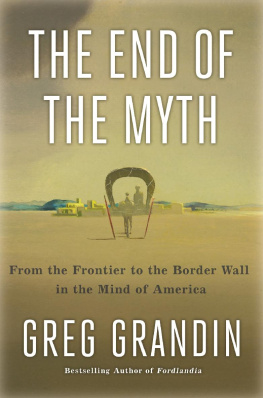
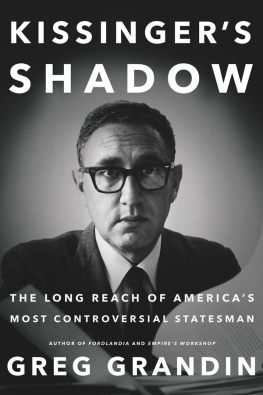
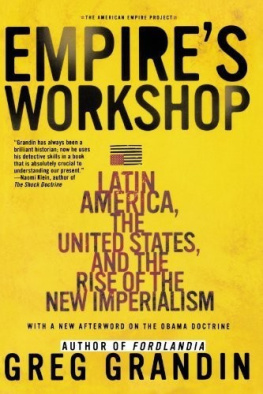




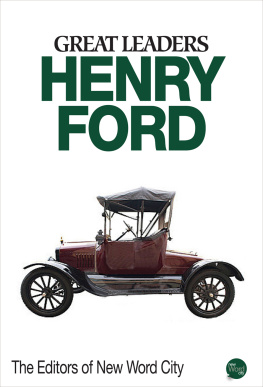
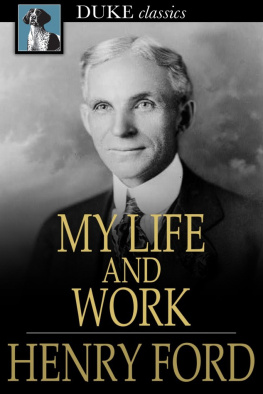
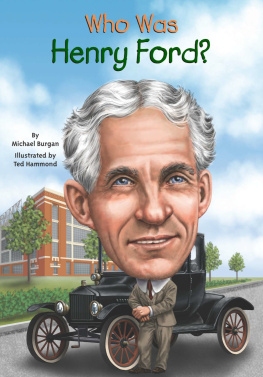
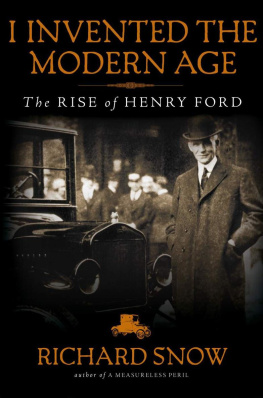



 are registered trademarks of
are registered trademarks of